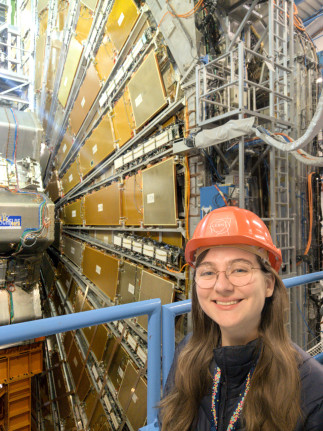Titre : Improving the search for new physics and the identification of electrons using machine learning at the ATLAS experiment.
Résumé :
The study of high-energy collisions by the ATLAS experiment at the LHC is essential to test the validity of the SM, the current theoretical framework that describes the fundamental particles and how they interact, as well as constrain its possible extensions. In light of its third data-taking period and the next generation of accelerators, the ATLAS experiment faces challenges associated with the high-dimensionality of the recorded signals and the large amount of data still left unexplored.
In this context, the use of deep learning techniques has great potential to improve the performance of the classification of the physics objects that originate these signals, as well as to provide new tools to perform fast statistical inference from the data. This thesis presents applications of these deep learning techniques to improve the electron identification algorithm performance, as well as a new strategy to search for resonances in invariant mass distributions with the ATLAS experiment.
Firstly, new measurements of the efficiency of the current electron identification algorithm are presented, using data recorded in the beginning of Run 3 as well as the reprocessing of the Run 2 data with the new version of the ATLAS software. A small reduction on the discrepancies between the values obtained from MC simulated events and the data is observed, a consequence of the improvements made to the ATLAS software before the start of Run 3.
Next, the development of a new electron identification algorithm is presented, where low-level detector information is processed in the form of images via a convolutional neural network. A study of the importance of its input features shows the relevance of all the current inputs considered.
Furthermore, the rejection of the larger background class is decreased when a model trained with examples from simulated events is used to reject those obtained from experimental data. We show this rejection power is recovered if these data examples are incorporated into the training.
Lastly, a novel strategy to search for resonances in invariant mass histograms is presented. It uses a neural network to predict the local statistical significance of resonances from its bin entries. The implementation of this method using realistic simulation data shows good results, with the prediction of the maximum significance within a histogram having no bias and a small variance. Work towards an implementation of this method within the ATLAS experiment is also presented, including the production of invariant mass histograms using ATLAS simulation data.
Keywords: particle physics, LHC, ATLAS, deep learning, neural networks, electron identification, anomaly detection

